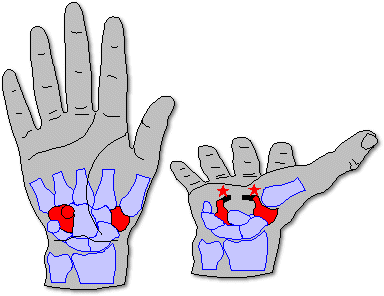| Pillar pain (tenderness adjacent to the actual ligament release, where the prominences of the trapezial ridge and the hook of the hamate are closest to the skin. The transverse retinacular ligament, divided during carpal tunnel release, attaches to these structures, and the inflammatory reaction of normal wound healing is most obvious at these points, often more than the central area of the actual release. |  |